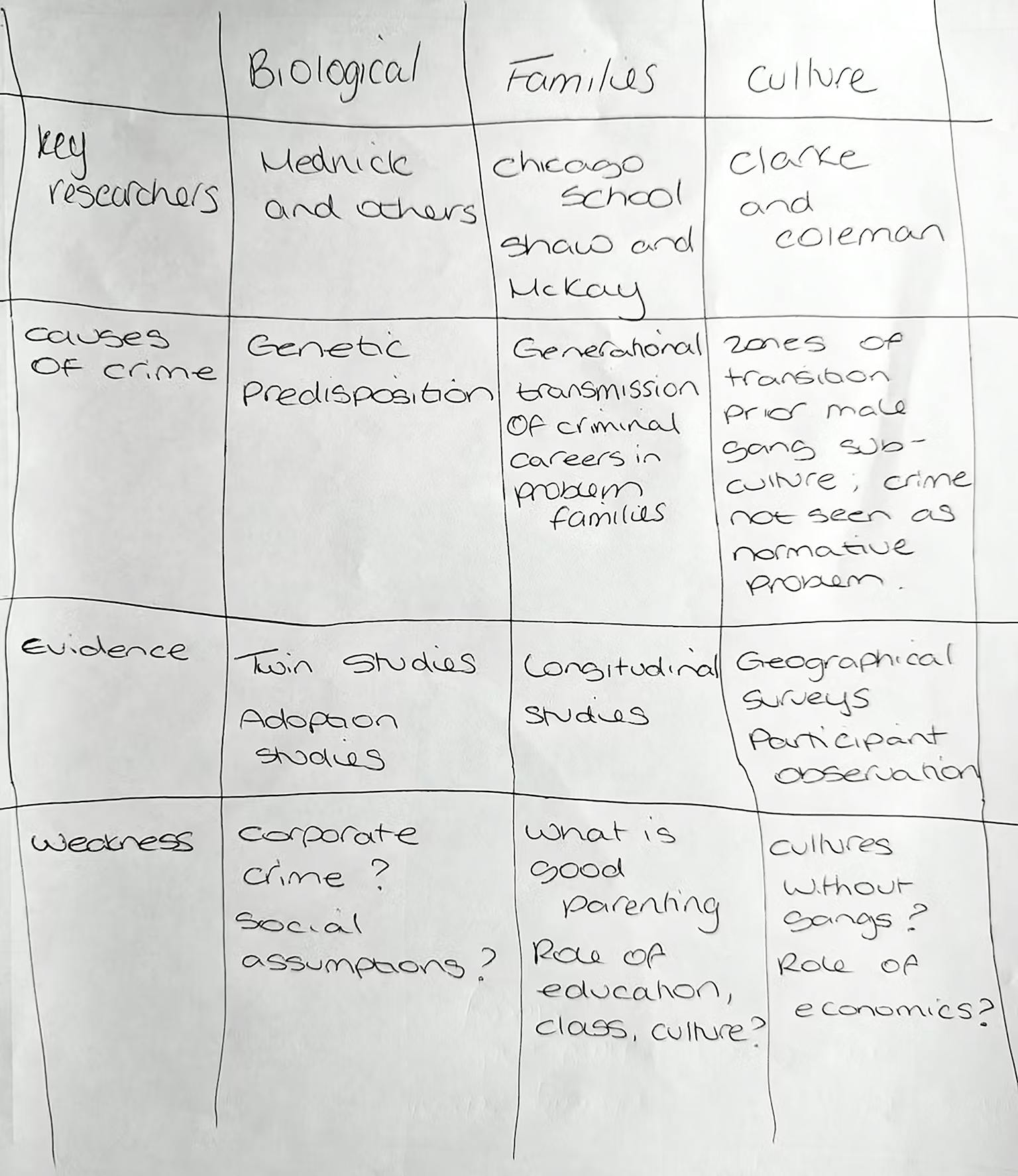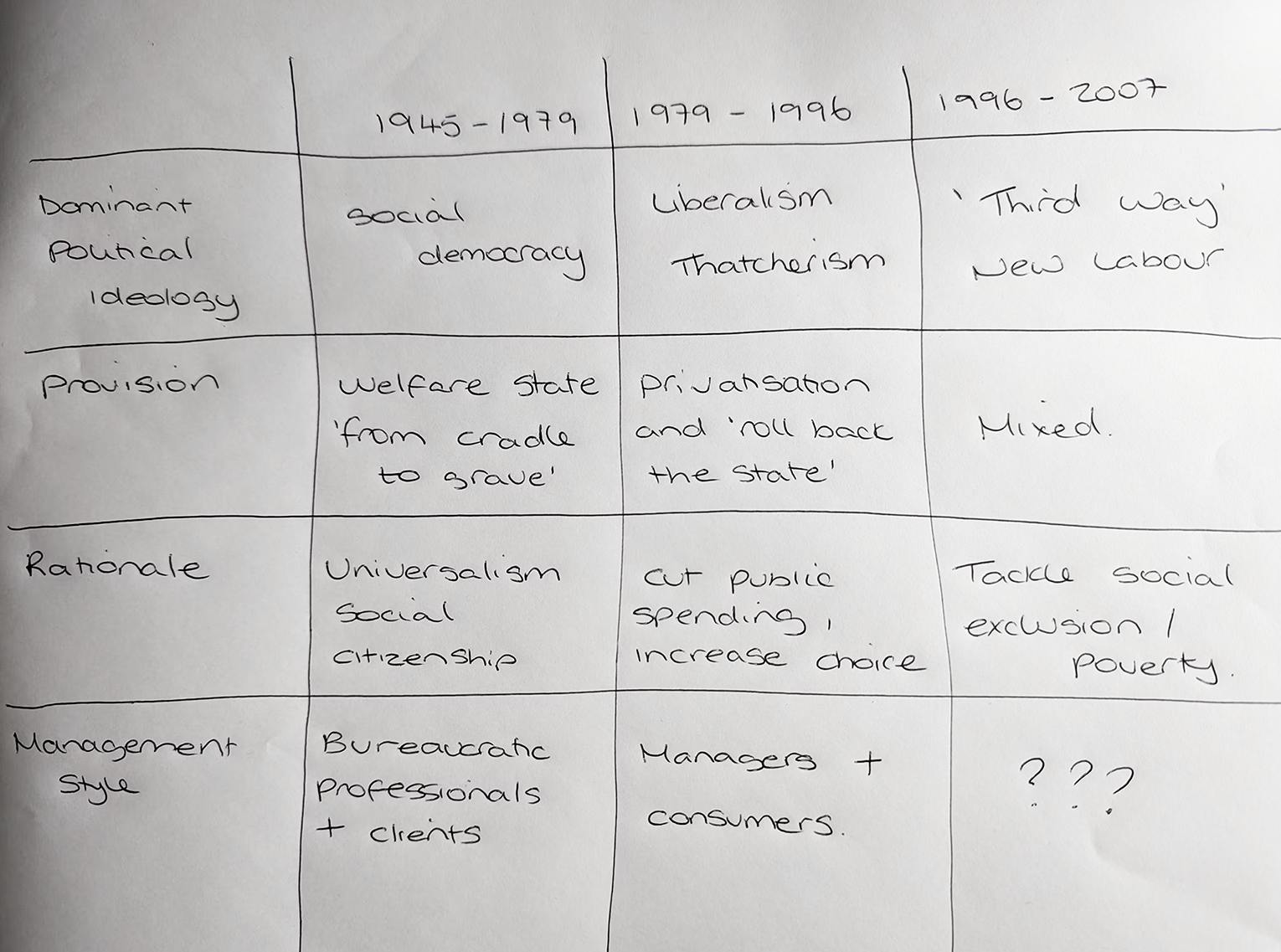Tables Note-taking techniques
Using tables, or 'tabular note-taking', is a good technique if you need to summarise information that you want to compare, such as a debate with differing viewpoints. Summarising the points in a table helps you to evaluate them, improving your understanding of a topic and helping you prepare for an essay or exam.
Tabular notes can be useful in social learning, in tutorials, student support groups or more informal contexts - you may find it interesting and thought-provoking to work with other students to create a table comparing views on a topic.
Tabular notes, like other forms of note-taking, can be adapted to your personal style. Be creative and try experimenting with headings and categories. In the examples shown below you could also consider, for example, how different approaches relate to the broader themes of the module, or how different policies have been interpreted or criticised by competing theorists.
Example 1: Tabular notes about crime
The table consists of four columns and four rows. The student has used the table to compare the key researchers, areas of expertise, causes of crime and evidence supporting the research.

Example 2: Tabular notes on the welfare state
The table consists of four columns and four rows. The student has used the table to compare the dominant political ideology, provision, rationale and management style.

You could also use a table to help decide between different note-taking methods. List the different methods in the first column and then in the second and third columns write the advantages and disadvantages of each to help you decide.